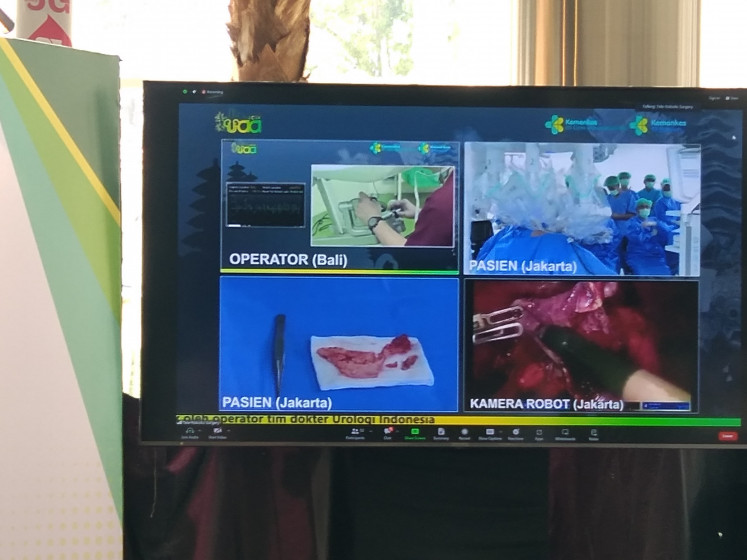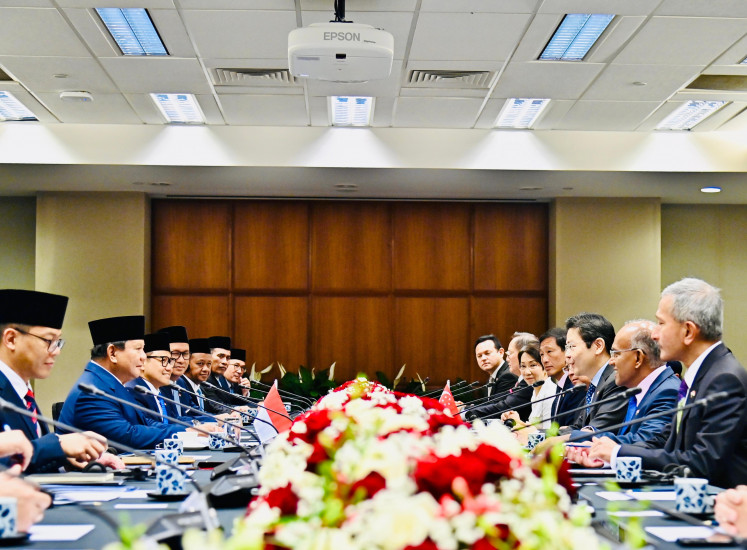Popular Reads
Top Results
Can't find what you're looking for?
View all search resultsPopular Reads
Top Results
Can't find what you're looking for?
View all search resultsChinese smartphone firms look to meet TKDN rules
This year has seen continued investment by Chinese smartphone companies in the Indonesian market in response to the government’s new local component (TKDN) scheme, with established players announcing their commitment to the new standards
Change text size
Gift Premium Articles
to Anyone

This year has seen continued investment by Chinese smartphone companies in the Indonesian market in response to the government’s new local component (TKDN) scheme, with established players announcing their commitment to the new standards.
Xiaomi’s new senior vice president Wang Xiang explained on Friday that 2017 would be a year of heightened investment and it would probably allocate a significant amount for the technology-development and engineering sectors.
At the same time, it is also looking at a possible research and development center, as well as partnering with local app developers, telecommunications operators and internet service providers on projects.
The move is part of Xiaomi’s efforts to meet the government’s TKDN rules, which require 4G smartphone makers to use a minimum of 30 percent local components in their products.
The TKDN ratio was increased on Jan. 1 from the previous 20 percent. What constitutes local components now includes hardware, software or investment commitment.
“While we achieved the previous 20 percent requirement, getting to 30 percent will undoubtedly take time to achieve because of the various localization practices involving batteries and language,” Wang said.
“We hope that by committing to the TKDN requirements, we can also help resolve the issue of illegal imports here.”
Xiaomi, which was valued at about US$45 billion in 2014 according to Bloomberg, currently sees its smartphone market share in Indonesia revolving outside the top-five list.
After debuting in Indonesia in 2014, Xiaomi launched its newest smartphone, the Redmi 4A, on Friday, which is touted as its first smartphone to fulfill the 20 percent rule and the first to be locally produced.
The Redmi 4A is produced at Satnusapersada’s smartphone factory in Batam, Riau Islands, and is distributed by the Erajaya Group. It will be available for purchase at the end of February.
In addition to the Redmi 4A, Xiaomi plans to introduce four to five other smartphone models in Indonesia this year, with all of them produced at Satnusapersada’s Batam factory.
Meanwhile, Xiaomi’s fellow Chinese smartphone company, Vivo, has also announced its commitment to fulfilling the TKDN requirements.
Vivo Indonesia brand manager Edy Kusuma said that the company had already fulfilled its 30 percent requirement, but declined to elaborate on whether this was achieved through software, hardware components or investment commitments.
“Either way, it wouldn’t be hard for us to fulfill this standard once we commit to it. In any conditions, we always analyze the market climate, so that we can forecast our moves in it,”
he said.
Vivo currently has a production factory in Cikupa, Tangerang, Banten, with total production capacity of 500,000 units per month.
Tribunnews reported in December that China’s Huawei Tech Investment was interested in expanding its software business to meet the 30 percent requirement for 4G phones. At present, the company opts to meet the hardware aspect requirement by assembling its phones at Panggung Electric Citrabuana’s factory in Sidoarjo, East Java, with a capacity of 500,000 units per year.
Communications and Information Minister Rudiantara stressed that smartphone companies must consider overall value in the TKDN requirements, explaining that producers should not simply look at it as an incentive to manufacture in Indonesia.
“The incentive will come in the form of the market itself, with a prediction that over 35 million smartphones will be sold in Indonesia in 2017,” the minister added.
If realized, this figure will have risen by 19.4 percent compared to 29.3 million smartphones sold
in 2015.
Meanwhile, Chinese Ambassador to Indonesia Xie Feng said the first locally made Xiaomi phone represented a new stage in China-Indonesia cooperation, namely a transition from traditional trade and project contracts to investment, technological transfers, personnel training and joint production.
Data show that Chinese companies have made over US$50 billion of investments in Indonesia.









